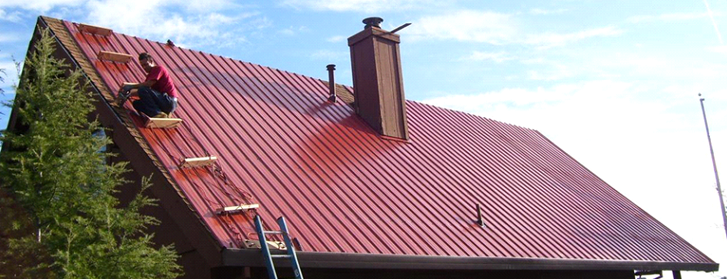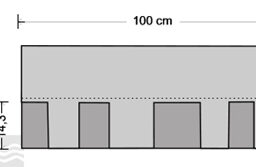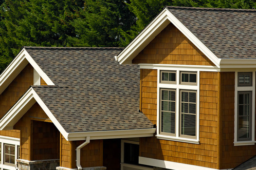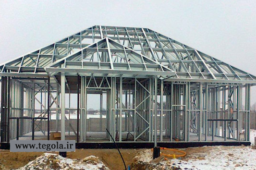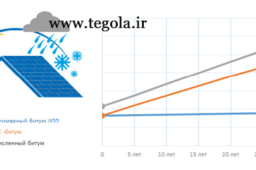:Introduction
Homeowners and architects consider many factors when making design decisions for a new home. From the architectural style of the building that needs to be designed according to the owner’s personality and budget to the location where the building is built, everything needs to be examined. One of the most important factors that we need to consider before building or buying a home is the roof. A house roof is a critical part of any building that is selected and installed based on its type, function, and most importantly, the environment in which the building is built.
Roofs are of various types, including dome roofs and flat roofs. Each has unique characteristics and uses. One of the types of roof that we will discuss in detail in this article is the pitched roof. Pitched roofs are generally used in environments with heavy rainfall, owing to their unique structures. This type of roof also has several subtypes, which will be covered below.
?What is a pitched roof
Pitched roofs are popular owing to their beautiful and elegant appearance. However, in addition to their beauty, they can also help improve the life of buildings in cold and rainy areas. From a technical and engineering point of view, roofs with slopes of 14 °to 73 °are called pitched roofs. Sometimes, its slope can range from 35 °to 53 °. Most people consider roofs with slopes of 30 to 2 to be pitched roofs. This means that for every 30 cm that we move towards the top of the roof, its slope increases by 2 cm.
When building pitched roofs, metals such as galvanized steel or other metals are commonly used. Furthermore, these roofs can be made of clay, wood, tiles, etc..
Types of Sloping Roofs
Sloping roofs are categorized based on the type of materials used in their construction as well as their appearance. The different types of sloping roofs are as follows:
Sloping Roofs Based on Materials
Various materials may be used for the construction of sloping roofs, including
Metal Pitched Roof: Metal roofs offer many advantages, including high quality, durability, and aesthetic appeal. They come in a wide variety of colors, which enhances building facades. Experts estimate that the useful life of the metals used in the construction of this type of roof is between 70 and 80 years. Metal-pitched roofs can be made in two ways: standing seams and metal shingles.
Wooden Pitched Roof: Wood is one of the oldest materials used in the construction of sloping roofs. Although they are still used to build gazebos in parks or recreational areas, they are less commonly used for pitched roofs in modern times. The wood used for this type of roof is sold in small pieces called “lambas” with dimensions between 9 and 20 cm, available in simple and rounded forms. These roofs are more decorative and may not last as long as other materials.
Clay Pitched Roof: Clay gives buildings an ancient and historical appearance, making clay sloping roofs popular among those interested in old-style architecture. Clay tiles are usually installed on the metal profiles of the roof, and wires are used to maintain stability. The primary tools used for the construction and installation of these types of roofs are sub-clay, absorbent or aerating clay, isobands, and combs. Clay tiles are available in a variety of colors, with brown, gray, and brick red being the most popular. Clay-pitched roofs are resistant to fire, retain their color in sunlight, and are more durable than other materials. These features make them suitable for use in tropical regions.
Andovilla Sloped Roof: Andovilla are made from a combination of cellulose and other minerals, such as bitumen. This lightweight material has acceptable wind resistance and is a popular option among environmentalists because of the materials used. Andovilla are resistant to moisture, making them suitable for building sloping roofs in rainy areas. It is soundproof and does not allow rain to enter buildings. These roofs are flexible and do not crack. Andovillas can be installed without any infrastructure and can be easily applied to metal and wooden grids.
Pebble Tiles: The core of these tiles was an alloy sheet with a gravel layer and an acrylic layer covering it. The acrylic layer prevented dust from sticking to it and prevented oxidation. These tiles are available on the market with a length of 40 cm length and 0.5 a diameter.
Sloped Shingle Roof: This type of roof is composed of a layer of fiberglass with a covering layer of saturated bitumen. It is also covered with colored granules to increase its resistance to ultraviolet rays and to enhance its appearance. Shingle-pitched roofs are cheaper than others and protect buildings from wind, rain, and noise.
:The advantages of using a sloped roof
If water droplets collect on a roof during rain, it increases the pressure on it and causes the roof to fail and leak. Sloped roofs rarely suffer from this problem because raindrops do not get a chance to accumulate on them due to their steep slope. They slip quickly and fall into the gutter, minimizing damage to your house’s roof. Additionally, you can collect and consume rainwater, which is another advantage.
A sloped roof minimizes your energy consumption. These roofs are good insulators and can reduce energy loss, keeping your home warmer. A warm house typically causes its roof to heat up as well. This causes remaining snow particles on the roof to melt faster during snowfall, causing less damage to your home’s roof.
Sloped roofs are economical due to their high durability. You no longer have to pay extra for roof repair and replacement. Furthermore, by preventing energy loss, they reduce the costs of heating your home.

